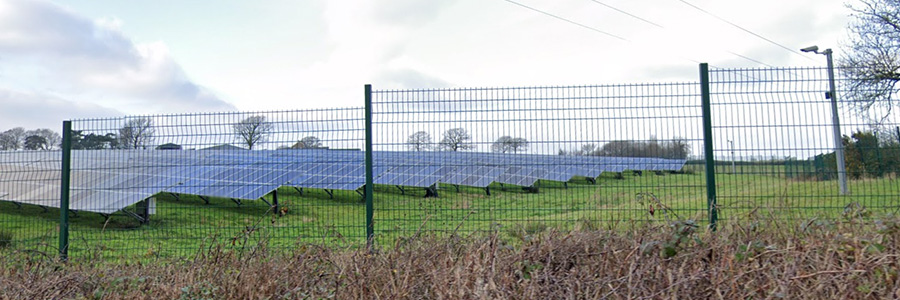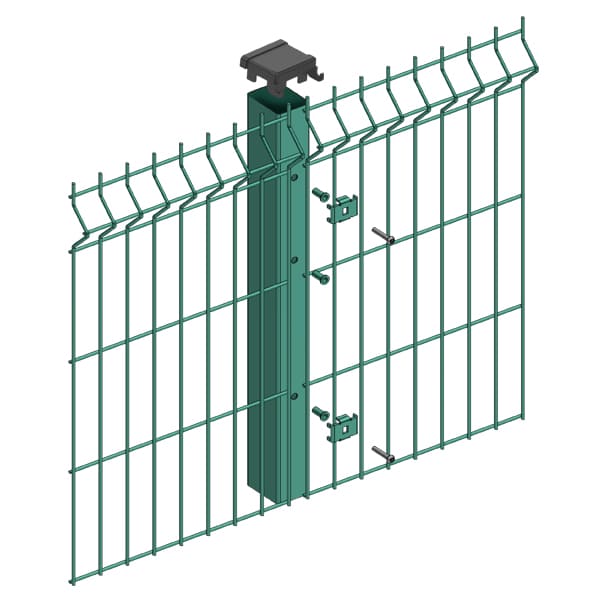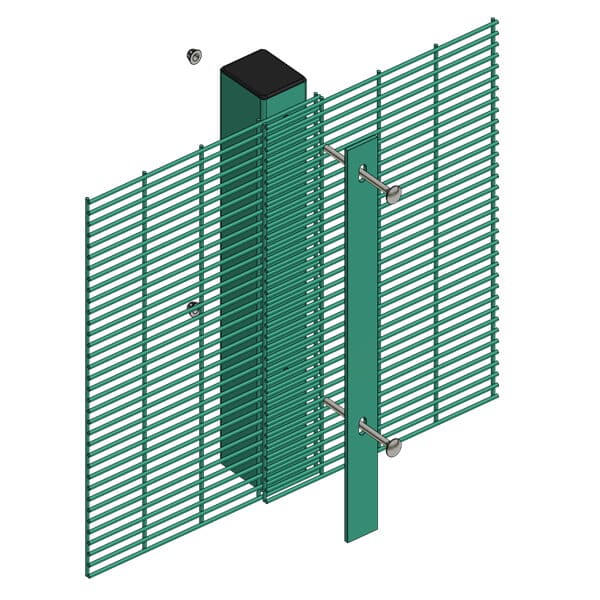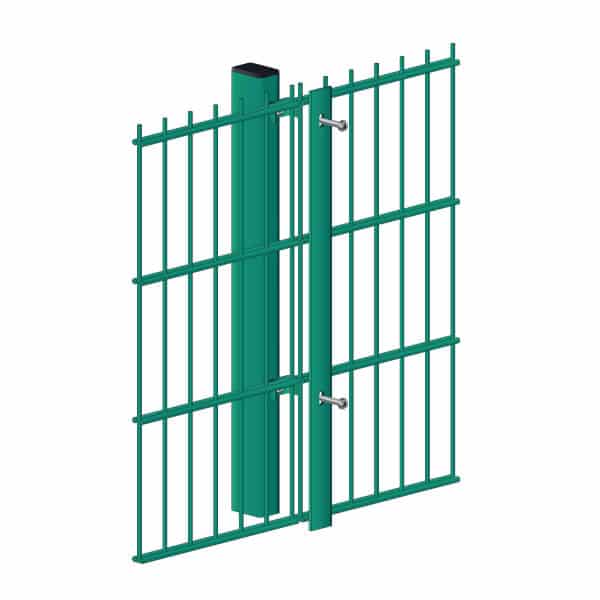Published:
As the world moves towards a greener future, renewable energy projects such as solar farms have become increasingly popular. However, many overlook an essential aspect of these projects – solar farm fencing.
Solar farm fencing is a protective barrier that surrounds solar panels and equipment, ensuring their safety and security. In this blog post, we’ll explain why security fencing is essential for your renewable energy project.

Why Solar Farms Need Fencing
Solar farms require a considerable amount of financial capital. Considering this, it’s vital that you provide protection and security for your renewable project in the form of security fencing. On top of this, regulatory requirements are a factor. Keep reading to learn more about the importance of providing solar farm fencing for your renewable energy project.
Protection of the Solar Farm
Solar panels and equipment are valuable assets that need protection. If left unprotected, they can be damaged by animals, weather, or human interference. Solar farm fencing can prevent this, keeping your equipment in good condition and prolonging its lifespan. Furthermore, incidents such as fires caused by unauthorised access can be prevented by having proper security measures in place.
Security for the Site
Solar farms are prime targets for criminals due to the value of the equipment. Without proper security measures, theft and vandalism can occur. This can lead to serious losses in the form of finances and project delays. Solar farm fencing can provide a barrier to deter criminals and prevent them from accessing the site.
Compliance with Regulations
In the UK, there are regulatory requirements for solar farm fencing, as considerable effort is expected to minimise the visual/landscape impact of solar arrays. Planning applications require all the details and specifications of security and lighting installations, which will be carefully considered before planning permission is granted, so it’s important to understand these regulations. Compliance can help prevent legal issues and delays in project development. Failure to comply with regulations can result in penalties, fines, or even project cancellation.
Here are specific UK solar farm fencing details from the BRE National Solar Centre: guidance:
- Minimise the use and height of security fencing.
- Integrate fencing with existing hedges or landscaping for natural coverage.
- Consider planting vegetation to support site security discreetly.
- Ensure larger mammals, like badgers, have passage routes; where deer control is necessary, less intrusive deer fencing is best.

Types of Solar Farm Fencing
Solar farm fencing comes in several varieties, each offering different levels of protection, durability, and aesthetics. The choice of fencing will depend on the specific needs of your solar farm, such as its size, location, and local regulatory requirements. Below are some common fencing types used for solar farms:
- Palisade Fencing: Known for its robustness and high-security features, palisade fencing is often used in areas where security is a top priority. Our farm security fences consist of vertical steel pales with triple-pointed tops, making climbing nearly impossible. This type of fencing is ideal for solar farm battery storage in more exposed or high-risk areas, as it acts as a strong physical and visual deterrent to intruders.
- Mesh Fencing: Welded mesh fencing balances security and aesthetics. It is constructed from steel wire, creating a grid pattern that is difficult to cut or climb. Mesh fencing provides good visibility into and out of the solar farm, ideal for locations where surveillance or monitoring is important. It is also corrosion-resistant and requires minimal maintenance.
- Electric Fencing: For added security, some solar farms install electric fencing either as the primary barrier or as a secondary deterrent along the perimeter.
- Wooden Fencing: In some cases, wooden fencing may be used, particularly in rural areas where natural aesthetics are important, and the security risk is lower. However, wood is less durable and can be susceptible to damage from weather or pests, so it is less commonly used for high-security solar farms.
Specialised Solar Farm Fencing: SolarGard
While each of the above fencing types has its own benefits and drawbacks, when it comes to securing a solar farm, using fencing specifically designed for this type of project is best. SolarGard, developed by Alexandra Security, is a highly specialised solution built with solar farms in mind. Its galvanised steel construction is engineered to withstand the elements and provide long-term durability with minimal maintenance requirements.
In addition to its robust construction, SolarGard fencing is equipped with anti-climb features. The system uses prison-rated 358 mesh panels with tightly spaced wires, which make it extremely difficult for intruders to scale the fence.
Environmental Design Considerations
Since solar panel farms are pursuing renewable energy, security risks aren’t the only consideration for security systems. One of the key advantages of SolarGard is that it aligns with the sustainability goals of solar farm projects.
The SolarGard system is designed to be environmentally friendly, using durable, low-impact materials. Its galvanised steel and powder-coated finishes mean that the fence can withstand extreme weather conditions without requiring frequent maintenance or replacement, reducing its environmental footprint over time.
What’s more, the long lifespan of SolarGard fencing minimises the need for material replacements and repairs, making it an eco-friendly choice that aligns with the sustainability objectives of your renewable energy project. This balance between robust security and environmental responsibility makes SolarGard a natural fit for any solar farm development.
Security Gate Integration
Another critical aspect of security that cannot be skipped is controlling access to the site. SolarGard fencing is designed with security gate integration in mind, allowing for the seamless incorporation of controlled entry points. Whether you require swing gates, sliding gates, or automated access systems, SolarGard can be paired with these features to ensure that only authorised personnel can enter the site.
This level of control is essential for maintaining the integrity of your solar farm, as unauthorised access could lead to theft, vandalism, or even accidental damage to sensitive equipment. Integrating security gates into your fencing system will mitigate potential threats to these critical infrastructure facilities and ensure your renewable energy project operates without disruption.

Final Thoughts on Solar Farm Fencing
Solar farm fencing is essential for protecting the equipment, providing security, and ensuring regulatory compliance. It’s important for businesses that are developing renewable energy projects to prioritise robust perimeter security in their plans.
Not only does it safeguard the equipment and site, but it can also save money in the long run by avoiding costly repairs and legal issues. Take the necessary steps to ensure your renewable energy project is safe and secure. Call us at 01892 833 001 to discuss your security system needs today.





